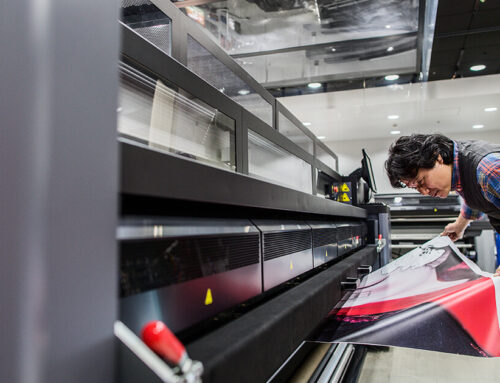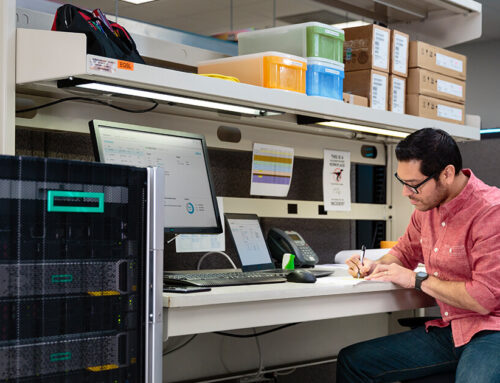The neurodiversity movement is gaining momentum, as corporate sponsorship builds on lessons learned from hiring people on the spectrum.
As the boy dropped one pebble after another into the Japanese pond at perfect intervals for two straight hours, Michael Fieldhouse took note. The 4-year-old autistic son of a friend was just doing what came naturally. But the boy demonstrated the single-minded dedication to a task and attention to detail that Fieldhouse was seeking in software testers—if only he could find them.
It was that epiphany that launched Fieldhouse’s own career in a new trajectory: spearheading work in hiring neurodiverse individuals, first at Hewlett Packard and later at DXC Technology in Australia. Today, the program is known as the DXC Dandelion Program, an initiative to employ workers on the autism spectrum with the goal of providing the necessary skills they can use to build sustainable IT careers. “We took a different approach comparing programs across the globe,” says Fieldhouse. “We knew that we had to deliver a sustainable solution, not just provide people on the spectrum with a job.” The key is to provide the team members with the skills and knowledge to enable them to have career mobility and deal with change. As autism has become more widely understood, many have come to recognize that what is typically thought to be a disorder often brings with it unusually acute cognitive skills. “They actually have ability, not a disorder,” he adds.
DXC Dandelion Program has been developed and co-designed with people on the spectrum, Cornell University, and La Trobe University. The program leverages tools from the University of Haifa and Ono Academic College that support the Israel Defense Force’s autism program. “Our biggest learnings have come from our collaboration with the Ro’im Rahock program in Israel,” Fieldhouse says.
“Individuals on the spectrum are very, very good at doing a lot of things. When they are interested, they are very disciplined. They tend to be persevering, and they can solve problems at a deeper level,” says Dr. Lawrence Fung, director of the Stanford University Stanford Neurodiversity Project.
Fieldhouse agrees: “People with autism are very strong in their interests. This is key to job and task alignment, which are extremely important to ensure productivity and retention. We have also launched a neurodiversity hub initiative focused on assisting colleges and universities to build the necessary support structures and employment pathways for people on the spectrum.”
Hiring on the spectrum
The current push, according to Fieldhouse, is actually the second wave of initiatives to bring people with autism into the workforce. The first dates back about a decade ago, though it petered out because of slim results due to a lack of understanding of autism and how to manage it in the workplace, he says.
The idea of autism as a strength gained currency thanks to the film “Temple Grandin,” which is about Temple Grandin, an autistic woman who earned a PhD and created innovative cattle management techniques based on her keen insights about bovine behavior. “Temple Grandin is one of the most powerful self-advocates. She has inspired many people—me as well,” says Fung.
Acceptance of autistic individuals is going hand in hand with a new openness among hiring experts to engage in contrarian thinking when considering job applicants. “We have such a tightly defined concept of who is ‘right,'” says Melissa Swift, senior client partner leader, digital advisory North America, at organizational consulting firm Korn Ferry. For example, she says, “People who are curious, adaptable, and take risks have much jumpier resumes.” But, she points out, that seeming erraticness might mask the ability to bring intense focus to a task and the willingness to move on when that task is complete.
One precursor to today’s corporate programs is an initiative of the Israel Defense Force that enables people with autism to serve in Israel’s armed forces, particularly military intelligence, where pattern recognition skills are highly valued. Fieldhouse, who collaborates with the program, was amazed at the depth and inclusivity of the program, which focuses on a broader range of the spectrum, not just high-functioning autistic people.
Other forerunners helping autistic individuals find jobs and assisting employers in hiring them include Integrate Advisors, a U.S.-based company; Auticon, based in Germany; and Specialisterne, a Danish foundation.
Now, DXC, SAP, Microsoft, IBM, JPMorgan Chase & Co., and other companies all sponsor programs to bring autistic talent into their workforces. What was once a lonely pioneering effort is now becoming mainstream.
There are two main reasons behind the push to hire autistic individuals: to do good by helping others and to do well by bringing exceptional talent aboard. “It’s important for us to satisfy our own staffing needs with the best talent,” says Jose Velasco, SAP’s vice president of products and innovation and head of the Autism at Work program in the Americas. “We have a vision to make the world run better and improve people’s lives.”
SAP’s autism initiative is delivering results in both areas. In one instance, an autistic individual who joined the company a year and a half ago has co-filed for two patents. In another case, a gifted engineer who was homeless before joining the company is now in the company’s program for high-performing individuals.
According to Fieldhouse, autistic individuals in DXC’s Dandelion Program have been very successful in cybersecurity, data analytics, infrastructure automation and monitoring, software testing, and coding.
Stanford’s year-old program has resulted in the hiring of three individuals on the autism spectrum in the university’s IT department.
Paying attention to successful practices
Corporate autism programs are reaching a critical mass and yielding insights as to how to run a successful program and help the individuals that are at the center of it.
Autistic individuals can face a Herculean task in simply holding a job, which is reflected in an unemployment rate of 85 percent, according to experts. It is important to understand that autism is often accompanied by co-morbidities such as anxiety, depression, and sleep disorders, Fieldhouse cautions. Companies must take into account the possible presence of these problems and recognize that they might affect job performance. Corporate employee assistance programs need to gear up their expertise in autism and adjust their expectations in many instances.
“For individuals on the spectrum, trying to match their interest to a job function is really important. You can get them to solve problems that others can’t solve at all. They can make a big difference,” says Fung. Conversely, he adds, if interest begins to wane, performance could drop off. “It is important to understand that, if someone is not interested, they may not be performing the job 100 percent.”
For an autistic individual, a job is a key piece of a larger puzzle. Because many live at home with their parents, steady employment can enable the achievement of moving out. Income can also enable such desires as air travel. But self-sufficiency is no easy task. The ability to maintain a healthy diet is another frequent obstacle for autistic individuals. Some don’t know how to take care of basic nutrition needs, so they gain weight. “They need to learn to eat just one donut instead of five,” says Fieldhouse. In response, DXC launched a cooking program.
Misunderstandings arise just as they do with the rest of the workforce. However, navigating through them requires a willingness to engage in new ways. “It’s not that the neurodiverse individuals or managers have done anything wrong. People need to be connected somewhat differently,” says Fung. Managing performance is a case in point. In cooperation with the University of Haifa in Israel, DXC has developed a performance management system geared to autistic workers. “It’s very direct, the way an autistic person would like. Managers really have difficulty in this conversation. This helps break it down and unpack issues like sleep deprivation that might be factors,” says Fieldhouse.
SAP began with software testing and has since expanded its program to include 24 different roles across 12 countries. “We started with very technical roles, but we realized the talents of autistic people are very broad,” says Velasco. Some 150 individuals participate, in such positions as graphic design, multimedia, business analysis, data protection, and compliance. At the same time, greater success is possible. SAP set a goal of 1 percent of the workforce but is not yet close to that figure, according to Velasco.
Overall, it’s hard to argue with results. SAP has an annual retention rate of 93 percent for autistic individuals, Velasco says. DXC is close behind with a rate of 92 percent. Both those figures are virtually the same as for the mainstream workforce.
Despite the increasingly mainstream nature of autism programs, it’s important to remember that new territory is being explored. “There is no one model that would be most effective,” says Fung. “The most important thing is to be open minded—to try to figure out what a neurodiverse individual’s interests and skills are and to try to leverage those in a job.”
How to introduce neurodiversity to your IT team: Lessons for leaders
- Start slowly. Internship programs are a great way for autistic individuals and companies to get a feel for each other.
- Find a champion. Sponsorship by a corporate leader is essential to gain buy-in across the organization.
- Expect change. Corporate culture needs to adapt to individuals with exceptional talent and differing behavior.
- Leverage networks. Organizations such as Aascend, Different Brains, and Uptimize work to facilitate knowledge exchange.
- Don’t expect miracles. Even a successful program won’t work for all individuals on the autism spectrum.
- Be open to success. Breakthrough solutions to thorny business problems, patents, and new initiatives could be pleasant surprises.
Destination url: http://hpe.to/6003EJOwW








